The Many Versions of Superman in the Comics & Other Media & Other Thoughts about the Depiction of the Man of Steel & His Supporting Cast
through the Years

Superman: The Movie & Superman II
Superman III & Superman IV
Post-Crisis Superman
Superboy of the Superboy TV Series
Superman: The Movie (1978) & Superman II (1980)
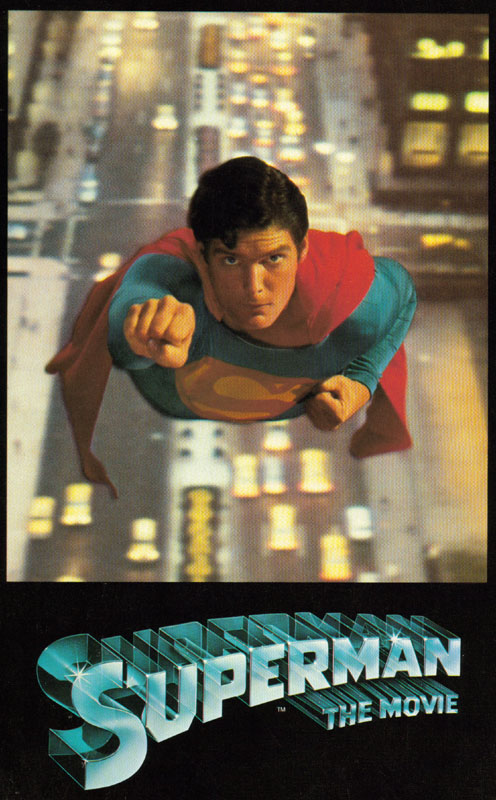
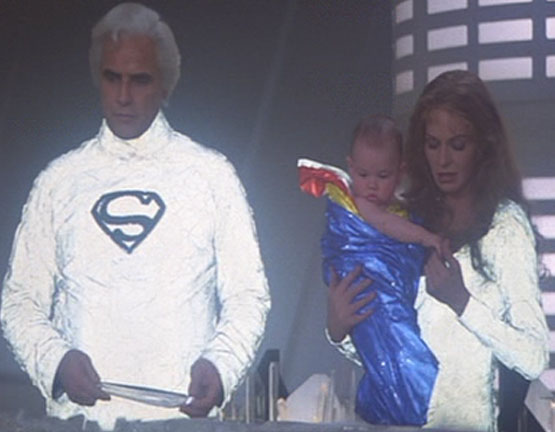
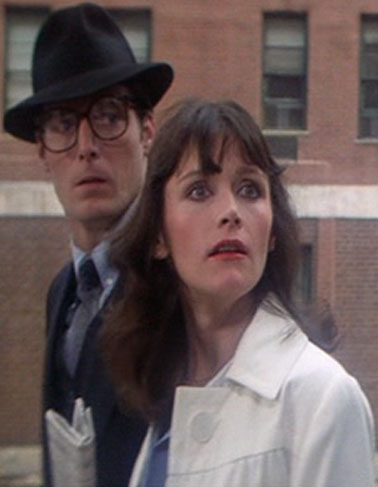
Christopher Reeve (1952-2004) embodied Superman to a new generation of Americans in this big-budget, special effect-laden series of films, which,
unfortunately, began to falter after the second outing. Margot Kidder (b.1948) played danger-prone Lois Lane. Academy-Award winner, Gene Hackman (b. 1930)
brilliantly executed the role of Superman’s arch-enemy, Lex Luthor. The great Marlon Brando (1924-2004) portrayed the tragic figure of Superman’s
father, Jor-El. The first film was directed by Richard Donner (b. 1930), who also directed The Omen, the Lethal Weapon series, &
Ladyhawke, in addition to the arguably-most-famous episode of The Twilight Zone, “Nightmare at 20,000 Feet.”
This version of the Man of Steel shared traits with both the Golden Age and Silver Age Superman.
Reeve’s costume was an exact match of the one shown in comics at the time. This Superman, like the Golden Age Superman, never had a career as Superboy
and did not meet Lex Luthor until he was an adult, although he arrived on Earth as a baby, was adopted by the Kents, displayed super-powers as a youth,
and communicated with his biological father through Kryptonian devices just as the Silver Age Action Ace did.
The film series departs from the comic book version, however, in several respects. Kryptonian fashion, architecture, and space vehicle design do not
resemble those depicted in the comics. Neither does the Phantom Zone or the Fortress of Solitude. Moreover, Superman’s father, Jor-El, wears the same
“S” device as Superman, implying that it is a sort of family crest or at least has some meaning on Krypton beyond its obvious English meaning.
(Purportedly, the idea for Jor-El to wear Superman’s famous logo came from Brando himself!) The film hints that young Clark Kent lacks the
power of flight, whereas the Silver Age Clark and Superboy flew better than a bird. Jor-El claims his son’s abilities on Earth are due to his “dense
molecular structure” but, later, says that Krypton’s “red sun” is the source of his power. General Zod, in the second film, states that the powers are
due in part to proximity to an atmosphere with only one sun, “a yellow sun.” Jonathan Kent dies prior to Clark’s adoption of the Superman persona, but
Martha Kent remains alive into his adulthood. Jor-El plays a far greater, more heavy-handed role in Superman’s inception than he ever did in the comics.
Marlon Brando’s Jor-El planned the whole thing. He sends Kal-El to Earth as a celestial protector or savior. The elder El teaches Superman how to
use the powers he has not yet discovered including flight, and, apparently, designs and bestows upon the Man of Steel his famous costume. (In the comics,
the idea to fight crime as a super-hero was always either Clark’s own notion or that of the Kents, and most versions have Martha design and sew the
costume.) The Lois Lane of this film series is a cigarette smoker, a bad speller, and not interested in marriage—quite unlike her comic counterpart.
Luthor, although bald, covers this up with a variety of hairpieces. In addition, Lex dresses more flamboyantly than the Luthor of the comics, some of
his wardrobe resembling more that of a Batman villain. This Luthor also appears less the scientific genius consumed solely with the destruction of
Superman and more the ruthless businessman concerned with financial gain and real estate ventures (albeit irregular ones). Luthor, also appears
significantly older than Superman, whereas the Silver Age Lex and Clark were the same age having been classmates at Smallville High. Finally,
Kryptonians display powers not available to them in the comics. Most notably, the Phantom Zone villains are shown emitting a white beam from their
fingers which acts as some sort of repulsion or anti-gravity ray. Superman himself does not display this talent until the fourth film, but does,
in the second film, push all three of his Kryptonian opponents’ white rays back at them. In addition in the second film, Superman and the Phantom
Zone villains in their final battle use the tactic of vanishing before capture. The film does not make clear if this is merely an effect of super-speed
or some other power. Superman himself appears to be three places at once; one apparition turns out to be an intangible phantom or hologram, and another
is revealed as a stone statue. Again, the film does not explain if this is the result of some undisclosed Kryptonian capacity or mechanical
intervention—a real possibility since this skirmish transpires at the Fortress of Solitude. Another point of divergence between this film and the
comics is in the method Superman employs to divest his powers. He undergoes a procedure in a molecule chamber that uses the “red rays of Krypton’s
sun,” according to Lara, which de-powers the Man of Steel. In the comics, Superman’s constant exposure to the radiation of Earth’s yellow sun made him
super. Exposure to red sun radiation, temporarily robbed him of some of his abilities. Only gold kryptonite permanently removed a Kryptonian’s full
complement of powers. Additionally, the Superman of this film series, like the comic book Action Ace, travels through time, but he accomplishes this
by causing the Earth to rotate in the opposite direction rather than exceeding the speed of light. Evidently, this sort of interference breaks some sort
of heavenly code, and Jor-El strenuously advises Clark against it on two occasions.
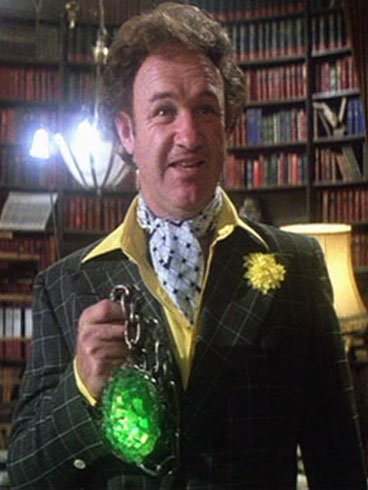


That changing the direction of the Earth’s rotation would not cause time itself to reverse direction notwithstanding, this plot device contains
a plot hole. Superman turns time back to a time before Lois’ car falls into a crevice, and before the dam breaks. The film does not show Superman doing
anything that would prevent the missile impact, the earthquake, the aftershock, or any of the tragedies he prevents the first time around, such as the bus
that is headed over the edge of the Golden Gate Bridge, the train about to be derailed, Jimmy Olsen about to plunge off the side of the dam, and the town
about to be flooded by the water spewing from the wrecked dam. This does not mean, however, that the Man of Steel does not in some way prevent one or more
of these things “off-camera,” but you would think such an act worthy of a few seconds of film. Lois’ car once again runs out of gas. But this time
Superman sets down beside her, and no crack opens up behind her. So Superman must do something to change history, but since you are not shown what he
did, you are left with the uneasy feeling that the film makers expect you to believe that turning back time was enough.
Moreover, Superman’s flying speed as witnessed when he flies around the Earth in less than a second points out a second plot hole. Namely, that
Superman “with your great speed,” in Luthor’s words, is more than fast enough to intercept both ICBMs.
Both Kirk Alyn and Noel Neill appear in a scene that was ultimately cut from the theatrical version of the first film. They play the young Lois’ parents.
Strangely, of all of the catchphrases associated with Superman, the films use just three: “truth, justice, and the American way,” “great metropolitan
newspaper,” and “mild-mannered reporter.”
Lex, at the climactic meeting of the hero & his arch-nemesis, delivers one of the best lines of the film, telling his henchman to “take the
gentleman’s cape,” 26 years before The Incredibles.
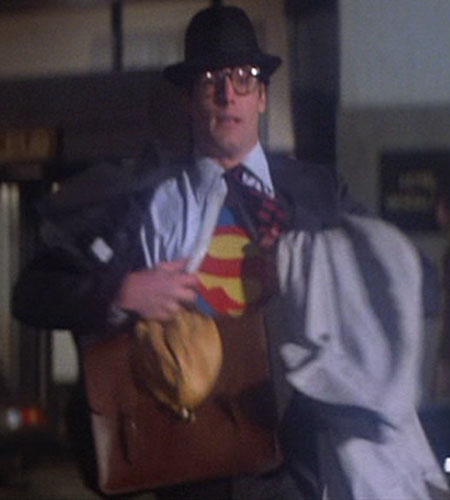

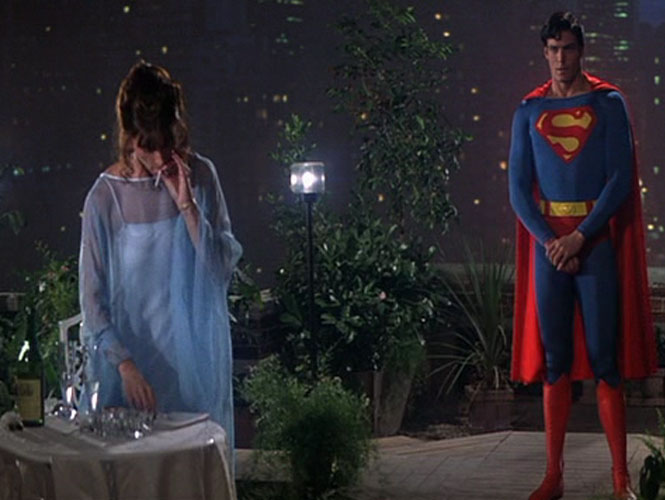
Jor-El’s science, as depicted in the film, is questionable. First, he tells Kal-El that there are “28 known galaxies.” Taken at face value, this is
absurd. Even in 1978, we Earthlings knew of far more than 28 galaxies. Since Jor-El is talking about the accumulated knowledge of these galaxies,
perhaps he means explored galaxies or, more likely, galaxies with intelligent life, which we have contacted and gained the following knowledge from.
Granted, this is a wordier expression than “known galaxies,” but that is just poor word choice. Second, he instructs Clark for 12 years at the Fortress
before releasing him to his destiny as Superman. (Evidently the three years in the spaceship were not enough.) Although 12 years seems lengthy (he could
have earned two or three doctorates) for the vastly superior technology of Krypton, the really strange thing is Jor-El’s choice of subjects. He spends a
year teaching Kal-El about the human heart. 365 days! What does he want Clark to be—a cardiologist? And then he spends a year teaching him “the various
concepts of immortality.” Now he wants Clark to be a philosopher? Nevertheless, there are still 10 good years for training in the “various concepts” of
how to save Lois on a daily basis, how to make constant excuses to duck into the storeroom, how to avoid kryptonite and magic, how to plant a good right
hook, and various other super-hero butt-kicking techniques...
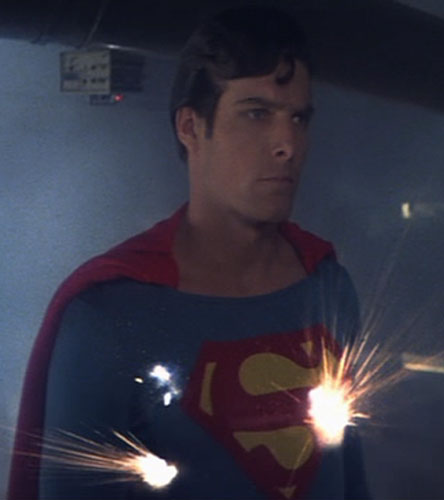
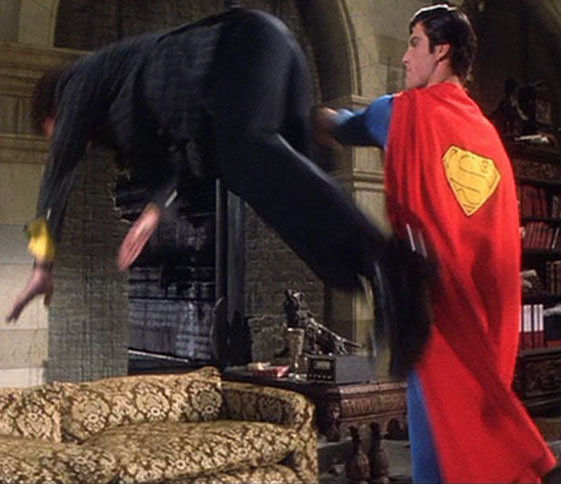
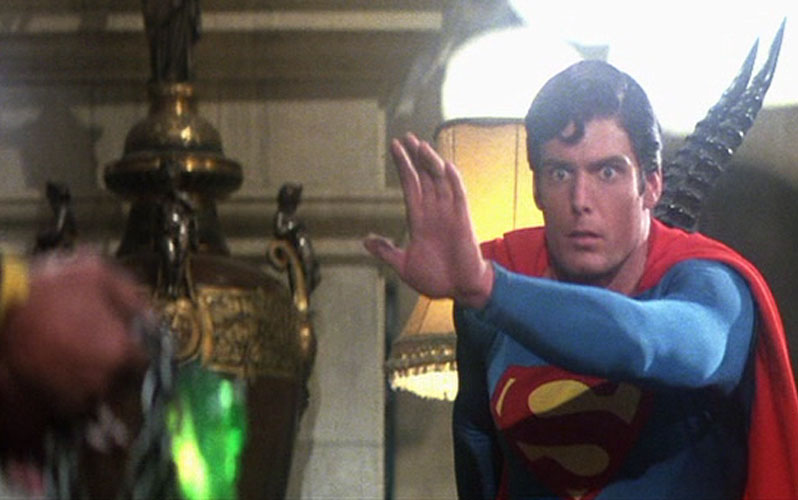 In addition, Jor-El claims that Kal-El will travel through six galaxies on his three-year voyage to Earth. The universe as we understand it is
mostly empty space. Thus it is unlikely that any straight-line route from whatever galaxy Krypton is in to the Milky Way would bring the spaceship
through a single galaxy, let alone six.
In addition, Jor-El claims that Kal-El will travel through six galaxies on his three-year voyage to Earth. The universe as we understand it is
mostly empty space. Thus it is unlikely that any straight-line route from whatever galaxy Krypton is in to the Milky Way would bring the spaceship
through a single galaxy, let alone six.
Lex Luthor’s logic also leaves something to be desired. Eve Teschmacher asks him if he thinks Superman is “the genuine article.” Lex retorts,
“If he is, he’s not from this world,” because, “if a human being were going to perpetrate such a fantastic hoax, it would have been me!” Given that
Luthor’s premise is sound—namely that he is the only human being who could create a fraudulent Superman—then the only conclusion we can draw is that if
Superman is a human being, then he must be “the genuine article.” This is the exact opposite of the conclusion Luthor draws. If, on the other hand,
Superman is not a human being (as we must assume Lex believes Kryptonians to be), we can draw no conclusions about his authenticity, because Luthor’s
premise says nothing about non-humans. Lex states nothing about the ability of non-humans to perpetrate such “fantastic hoaxes.”
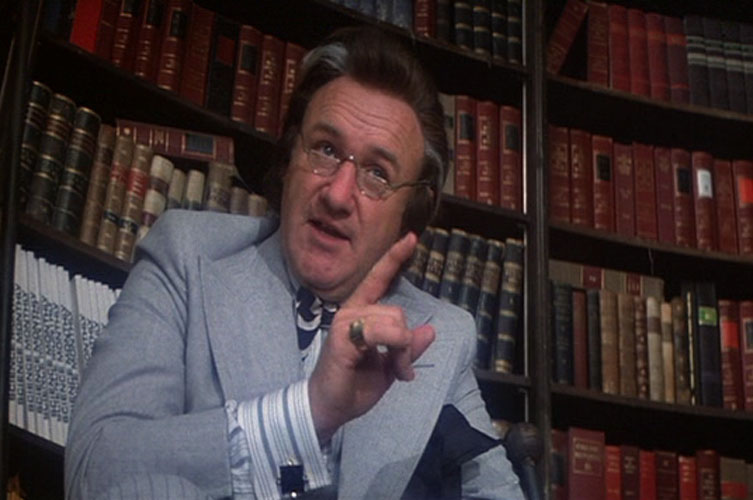
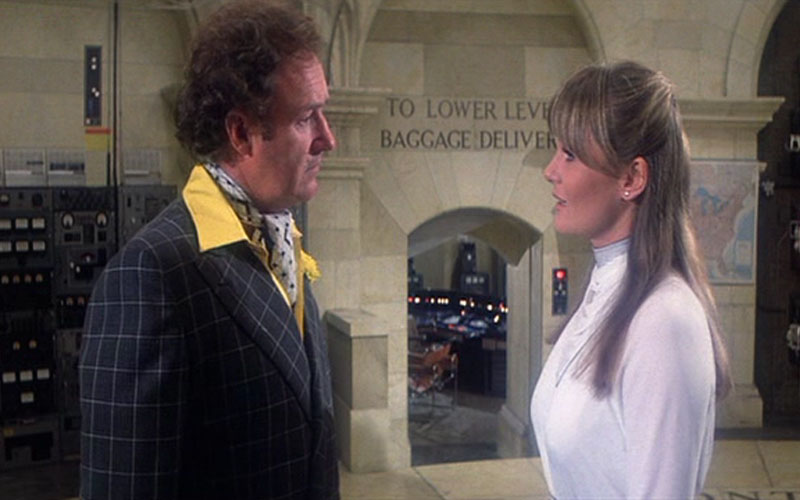
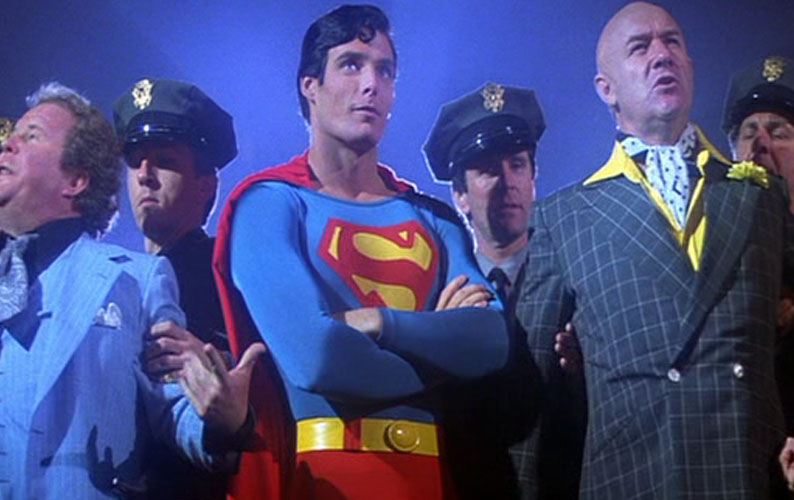
By far the most troubling scene, however, with the most plot holes and illogical consequences, is Lois’ interview with the Man of Steel, despite this
scene’s cuteness and pivotal position in the plot. Omitting miscues and poorly-worded initial inquiries, Lois asks Superman 11 questions: 1)
How tall are you? 2) How much do you weigh? 3) How old are you? 4) Do you eat? 5) Can you see through everything? 6) Are you totally impervious to
pain? 7) What color underwear am I wearing? 8) Where do you hail from? 9) Do you like pink? 10) Why are you here? and 11) How fast do you fly?
Superman additionally provides some information related to the questions, and some information is available to Lois by direct observation. But the
article, as we see later when Miss Teschmacher reads it, reveals information not related during the interview. It is possible that the entire interview
is not captured on screen, but there are no cuttaways during the sequence to suggest this. It is also possible that Lois has another source, but this is
never stated explicitly, nor does it seem feasible.
Most of the problems with the interview relate to x-ray vision. In the first place, how does Lois even know about this power? At this point in the film,
we have only seen him use it twice, without witnesses, and one of those times we can only infer that he uses x-ray vision as Clark to catalogue the
contents of Lois’ purse. Jor-El doesn’t even mention x-ray vision. Second, the whole bit about Superman peering at Lois’ undergarments is
rather uncomfortable and sophomoric in spite of being a handy way to reveal the power’s ineffectiveness against lead. Third, why would Lois disclose
to the world in general and Lex in particular the power’s limitation? And why does Superman allow her to? He is evasive about his age scant
minutes earlier. Is his age a more important secret than the vulnerabilities of the various parts of his crimefighting arsenal?
Later, when Miss Teschmacher is reading the interview, she states that the Man of Tomorrow does not drink. It may be nitpicking to point out, but Superman
does not say this. He says he does not drink when he flies. (Superman also does not actually profess not to smoke; he merely tells Lois that she
should not.)
Finally, all the Last Son of Krypton says about his place of origin during this interview is that he is from a planet called Krypton, which is in another
galaxy. That is all he says. Yet later Lex manages to deduce not only the existence and effects of kryptonite, but he determines the year and place of
impact of a kryptonite meteor on Earth. Lex says he can infer these given the location of Krypton’s galaxy, but Superman does not give this. Lex also
states the year of Krypton’s destruction as 1948. Again, the Action Ace does not supply this information, but, if true, it reveals another shortcoming
in the statements of Jor-El who says he has been dead for thousands of years. How can Lex already know about Krypton? If he does, his knowledge certainly
exceeds that of Jor-El, who thinks the universe contains just 28 galaxies and that 1948 was thousands of years ago!
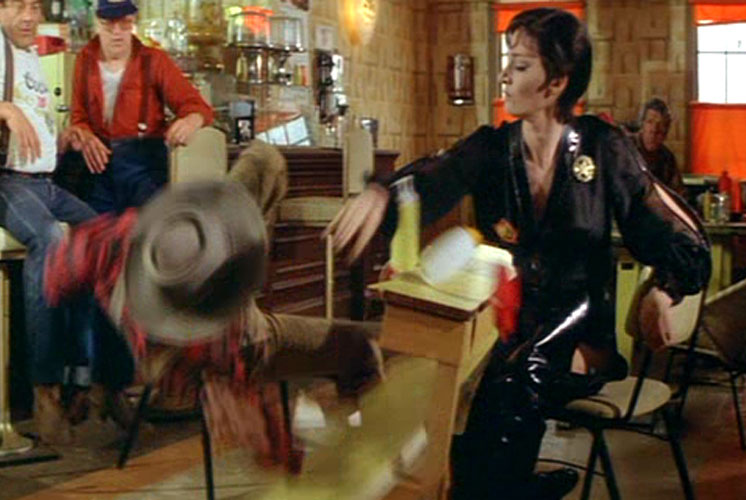
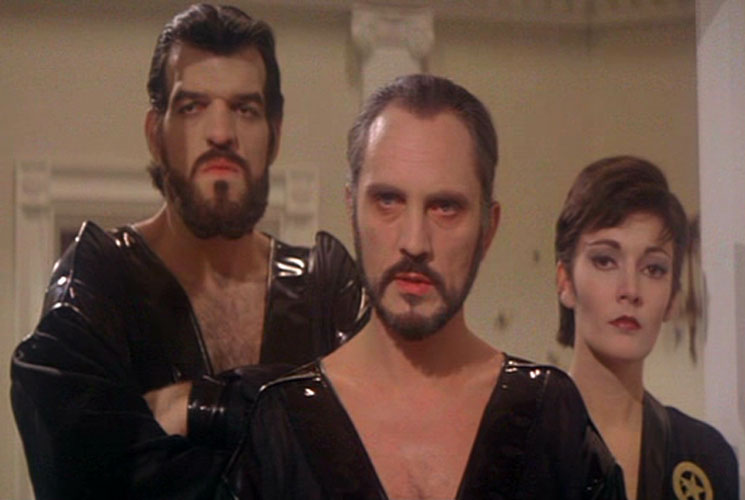

Unusal in the production of major motion pictures, Donner & the cast & crew completed principal photography for both Superman & Superman II
at the same time. The Superman film series’ producer & executive producer Alexander & Ilya Salkind had previously done the same thing with
their 1973 & 1974 films, The Three Musketeers & The Four Musketeers (directed by Richard Lester). The Superman films were originally
intended to be released close together. However, disputes over salaries & personnel led the Salkinds to fire both Donner & Brando. The Salkinds hired
Richard Lester to complete the largely already-finished Superman II. With Brando off the film, some of it needed to be re-shot. Purportedly,
Lester also needed to re-shoot enough footage so that at least 51% of the running time of the released film was his. Making this more difficult was
Hackman’s refusal to re-do any of his scenes in protest over the firing of Donner. Nevertheless, eventually, Richard Lester’s
Superman II was released to theaters and was almost as financially successful as its predecessor.
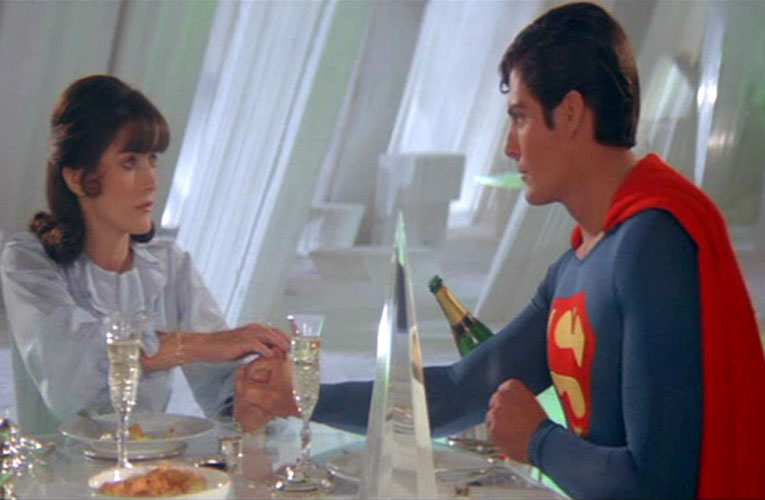

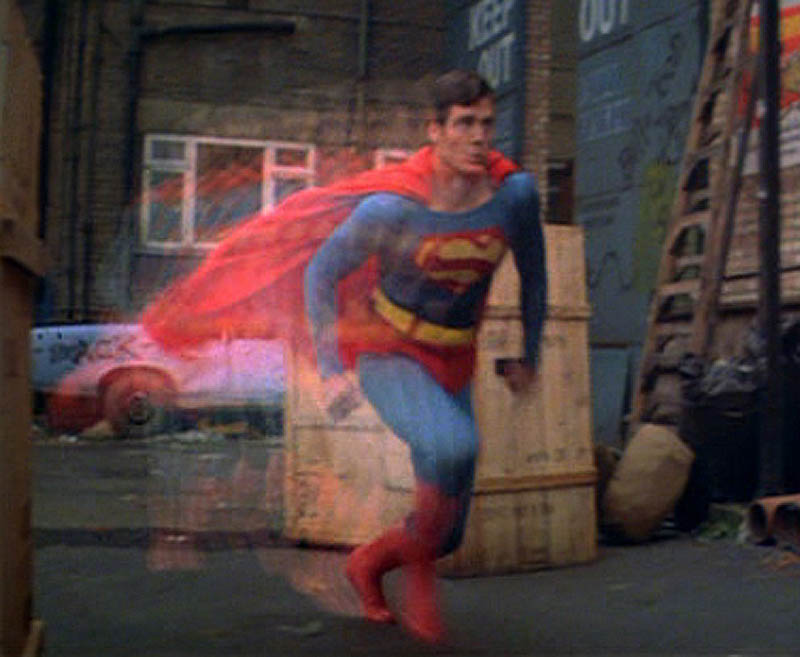
In 2006, Richard Donner released his cut of Superman II. It would be interesting to hear what Richard Lester thinks about this. I was expecting
this version to be better than the original in view of Superman III, but I was wrong. The fact is that Donner already made most of
Superman II anyway. The changes between the two versions of the film are minimal, and most of them make the film worse. The first change in the
Donner version is that it is the nuclear missile that Superman sent into space (the one bound for Hackensack, NJ from the first film) that frees the
Phantom Zone villains rather than a bomb-laden Eiffel Tower elevator. This change is mostly irrelevant except that it robs the film of an action sequence
of which the Donner version has few. The second change has Lois in her machinations to uncover Clark’s secret identity throw herself from a Daily Planet
window and ultimately fire a gun at Clark while at a Niagara Falls hotel room. In Lester’s version, this whole subplot takes place at Niagara. Donner’s
version flows more logically with Lois’ belief disproved in Metropolis (as Clark uses heat vision and super-breath to slow her descent rather than a
costume change), but rekindled when she sees the Man of Steel at Niagara where she and Clark just happen to be as well. And the coup de grace
of Clark’s surviving a gunshot is far more dramatic than the anticlimactic tripping on a polyester bearskin rug and failing to burn his hand. The third
change is that it is Marlon Brando rather than Susannah York who dispenses all Kryptonian wisdom at the Fortress. On the whole, this change is neither
good nor bad. The fourth difference is the absence of certain transitional scenes in the sequence in which General Zod et al invade the small town.
This gives the Donner version a certain choppiness and divests the film of yet another memorable action sequence (namely, Ursa’s mismatched arm wrestling
contest). The fifth difference involves Clark’s romantic interlude with Lois at the Fortress. In the Donner version, he sleeps with her before he talks
to his parents about it and then decides to give up his powers. There are three effects of this change. The first makes one casually wonder how committed
the Man of Steel is to Lois, since he waits until after the consummation of their relationship to tell Dad he is serious about her. The second effect is
that this conversation with Jor-El is an entirely different scene with vastly different dialogue from that of the original Lester version. Superman
sounds whiney, petulant, crass, and ignoble telling Jor-El that he deserves happiness and has done enough for the people of Earth. (What? He saved
Hackensack, NJ and California and put Luthor in jail—from which Lex has already escaped by this point in the film.) The third effect is one of the
film’s most memorable repeated lines is now removed (“Just tell me that you love me.”).
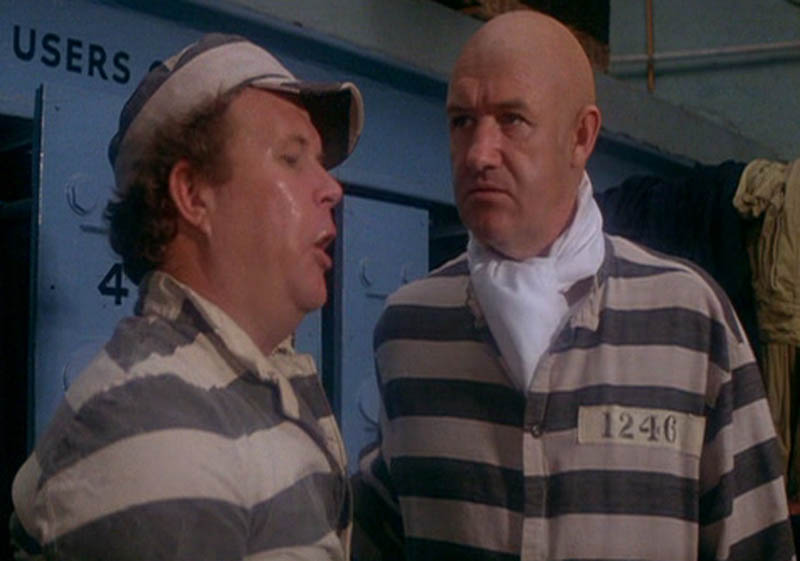
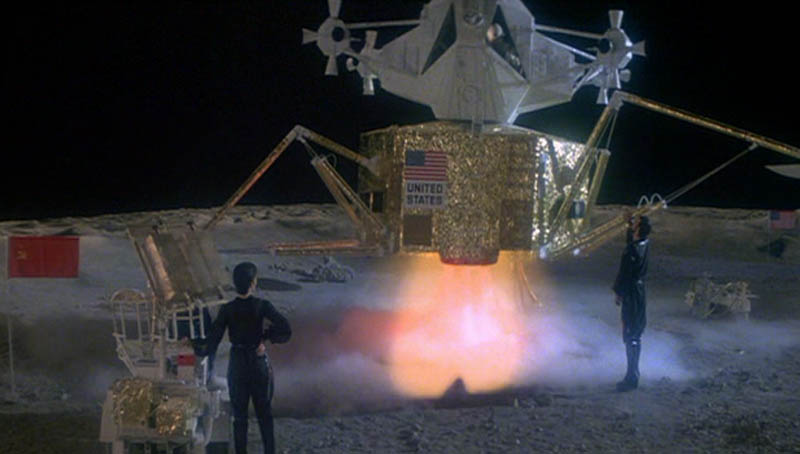
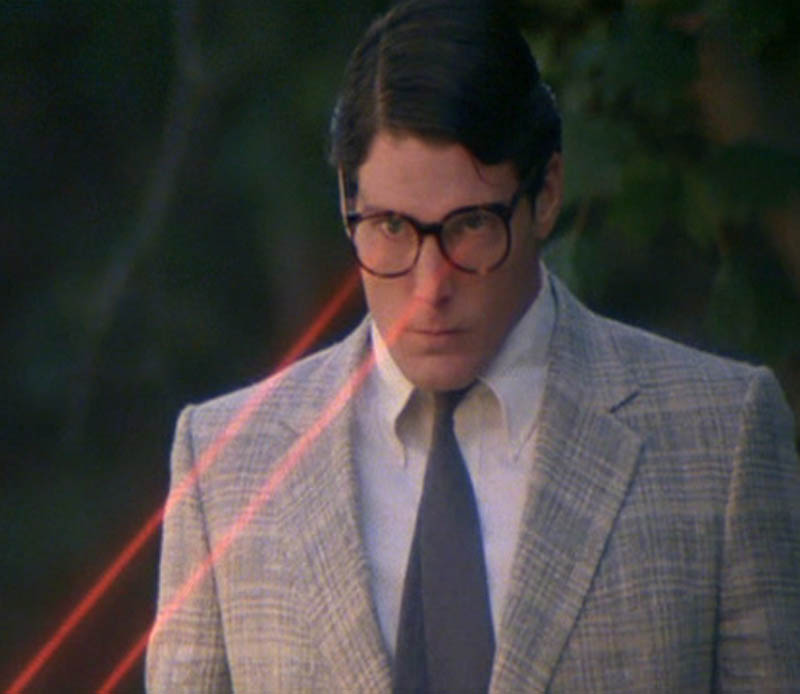
The sixth difference is in the penultimate battle over
Metropolis, which remains mostly unchanged. First, one of Superman’s best lines, “General, would you care to step outside?” is lost. Second, the
extended silliness of the sequence showing the effects of the super-villains’ breath on the city is also lost. This sequence makes me cringe every time
I watch it. I think it is supposed to be funny, but it just looks bizarre, and it very much reminds me of the similarly not amusing opening sequence of
Superman III. The seventh difference in Donner’s cut is the removal of the confusing, much-maligned, and largely silly battle at the Fortress.
In both films, the ultimate fate of General Zod, Ursa, and Non remains a mystery. I read a review once that claimed they were killed. I do not believe
this to be the case as there is no evidence of it. All three are thrown into an ice wall, which they slide down, and vanish in a puff of snow. No reason
to believe this was lethal, but we are never shown what happened to them afterward. In the Donner version, Superman destroys the Fortress with heat vision
shortly afterward. There is now the vague possibility that Superman killed the three Kryptonians and Luthor as well, as all four were last seen in the
Fortress. The final difference in the two versions, is how Superman resolves the issue of Lois’ feelings now that his decision to remain super is
manifest. In the Lester film, Clark kisses Lois with a potion of forgetfulness on his lips. She forgets everything that happened between herself and
the Man of Steel and forgets Superman’s secret identity. No problem. Donner’s version has Superman, once again, changing the Earth’s rotation and hence
turning back time. This time Superman clearly brings time back to the point at which the movie began, essentially meaning that the entire film did not
take place. There are three problems with this. The first is its repetitiveness. This is the same thing he did at the end of the first film! In all
fairness, Donner did not have much choice, as this was the ending originally intended for the second film. At the last moment, it was used for the first
film, and Donner was fired from the sequel before a new ending had been made. The second problem is the same problem seen in this approach in the first
film. Namely, that we do not see Superman doing anything to prevent events from happening all over again. We do not see him sending the missile to a
different place. The third problem is that, as in the theatrical film, the last scene has Clark revisit the bully from the Arctic diner and “teach him
some manners”—this time with super-powers. In the Lester version, there is no problem with this scene, but in the Donner version, Superman has just
turned back time so that the events of the film did not occur. And there is no sign that they will recur. So Clark’s initial encounter with the bully
never happened! The bully and the occupants of the diner would not recognize him! Finally, the Donner version loses another good scene in Superman’s
carrying the flagged dome to the White House and promising the President that he will not let him down again.
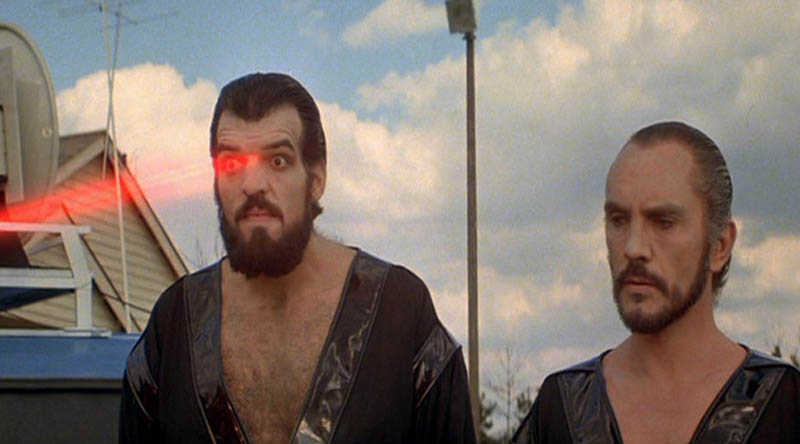

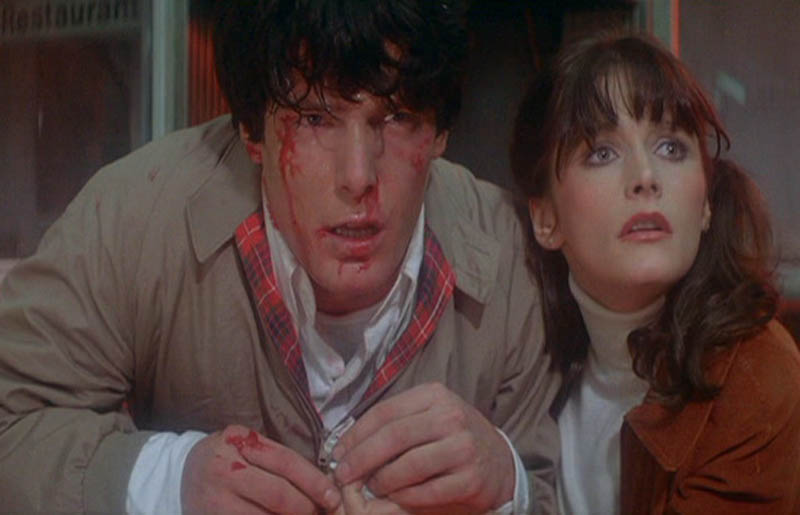
As of 2008, the first Superman film—essentially the first movie of the super-hero genre and the sixth-most-successful movie of all time when it was
released—is still the fifth-highest grossing film in that genre, when adjusted for inflation. Two Batman films and two Spider-Man films rank slightly
above it on the list.
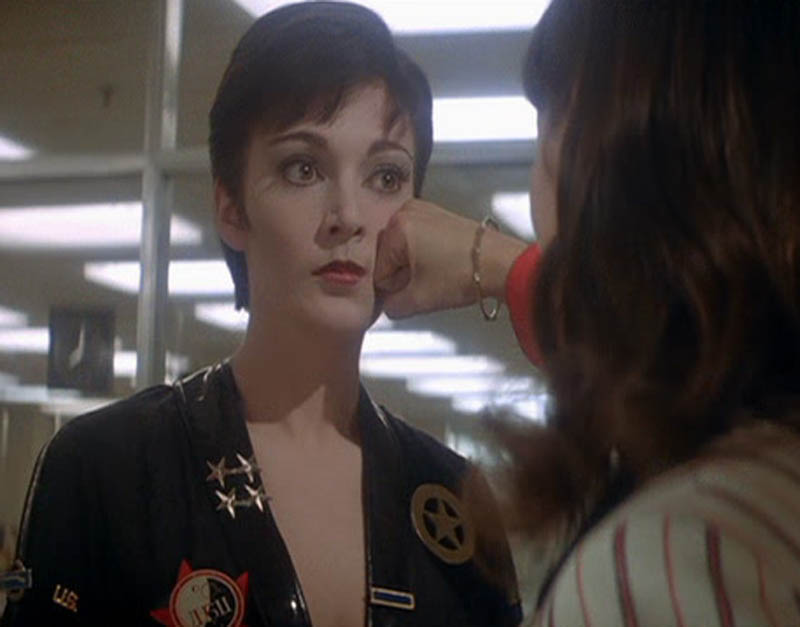
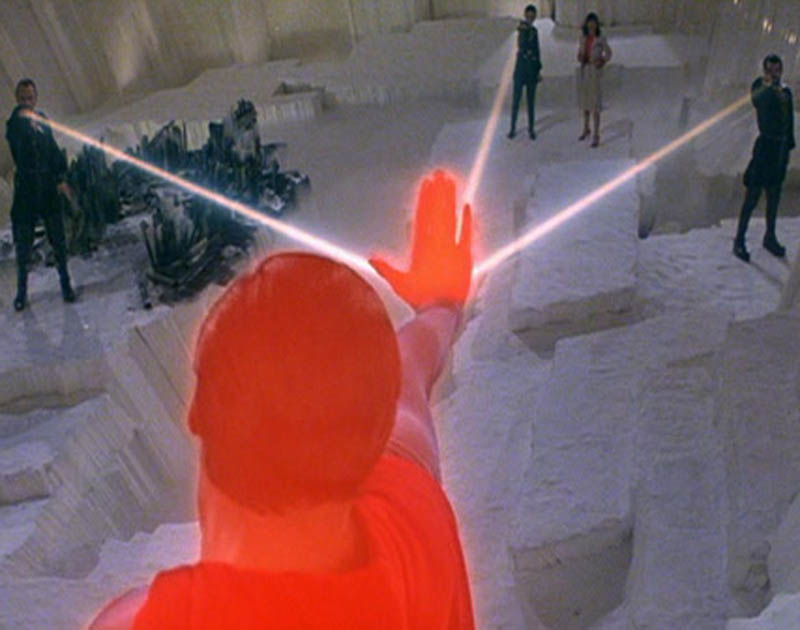
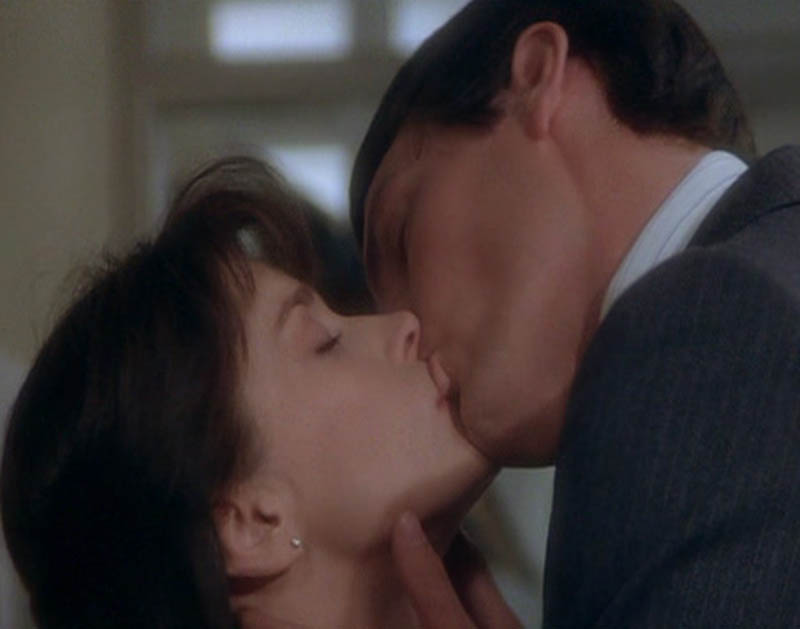
Superman III (1983) & Superman IV: The Quest for Peace (1987)
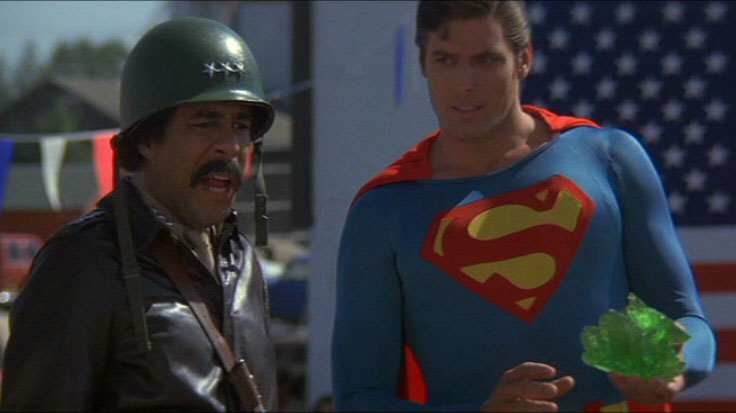
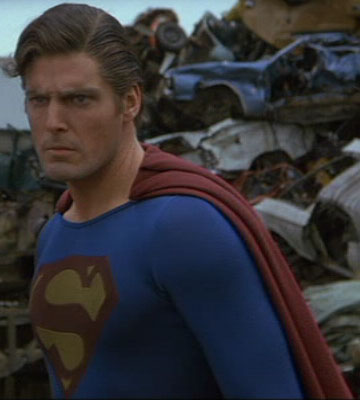

In Superman III, Superman battles a large computer, which may conceivably be considered a version of Brainiac—albeit a very different Brainiac
from the one presented in comics. Also, the kryptonite synthesized by Gus Gorman splits Superman into two beings—one good but weak, the other strong
and evil—a la Jim Kirk in “The Enemy Within.” The evil half of the Man of Tomorrow might also be considered a form of Bizarro or possibly
Ultraman. The film makers introduce two new characters never seen in any other Superman medium. The first is the villainous businessman Ross Webster
played by Robert Vaughn. The second is the semi-villainous and completely forgettable Gus Gorman portrayed by Richard Pryor.
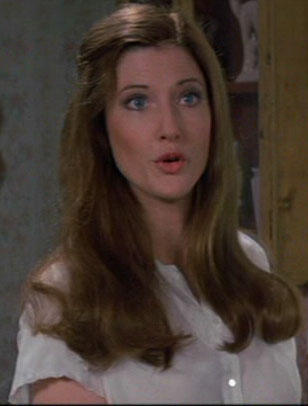
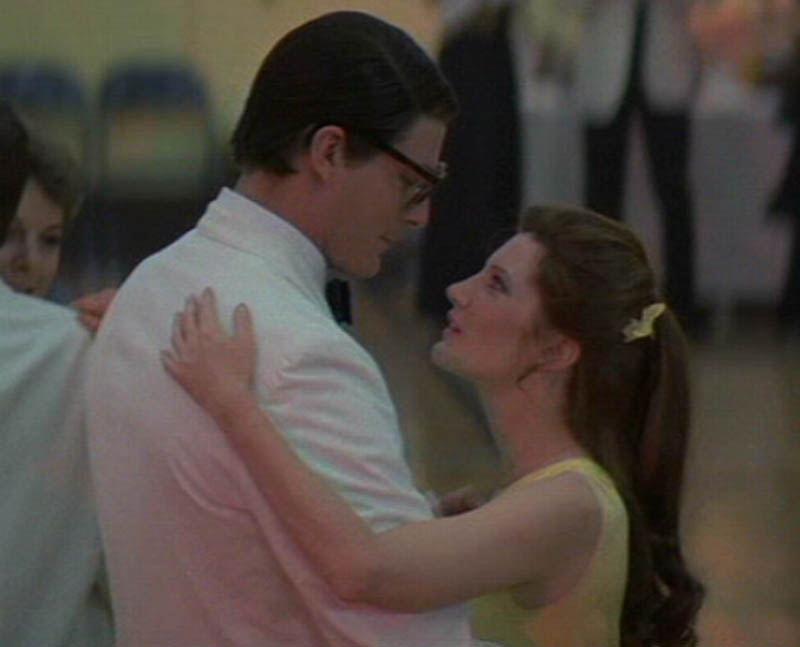
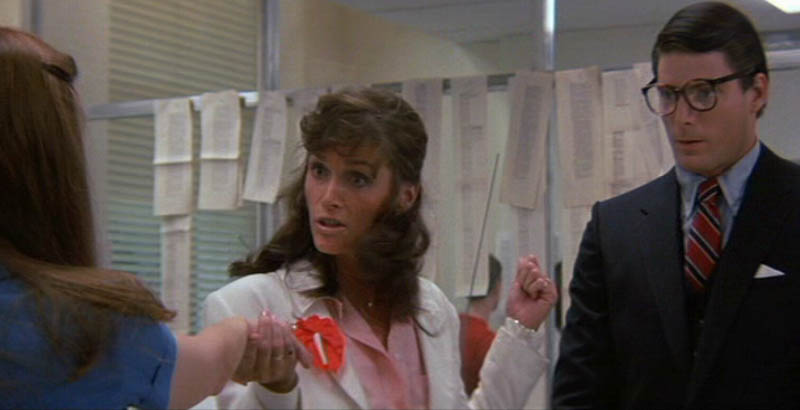
Margot Kidder reprises (barely) the role of Lois Lane in both films, but her part in Superman III was drastically reduced, purportedly due
to her vocal critcism of the producers for replacing Donner with Lester.
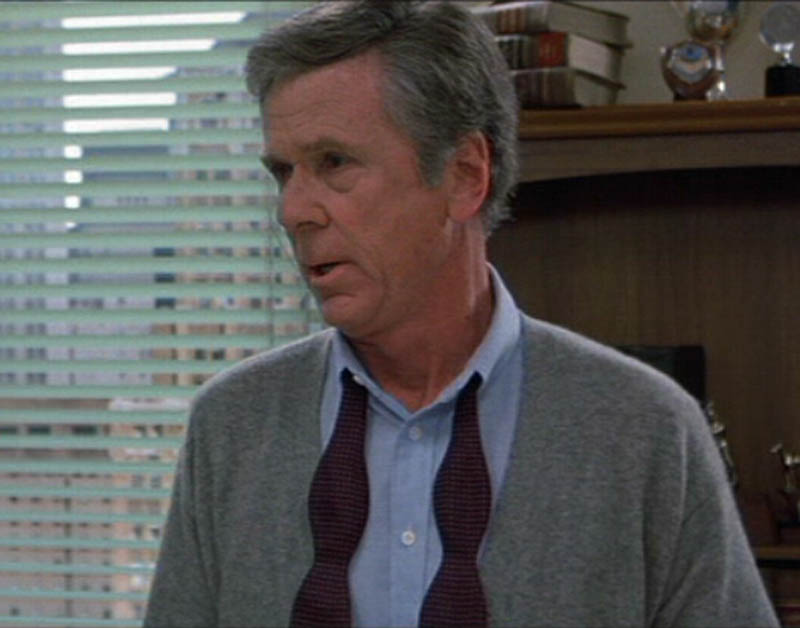
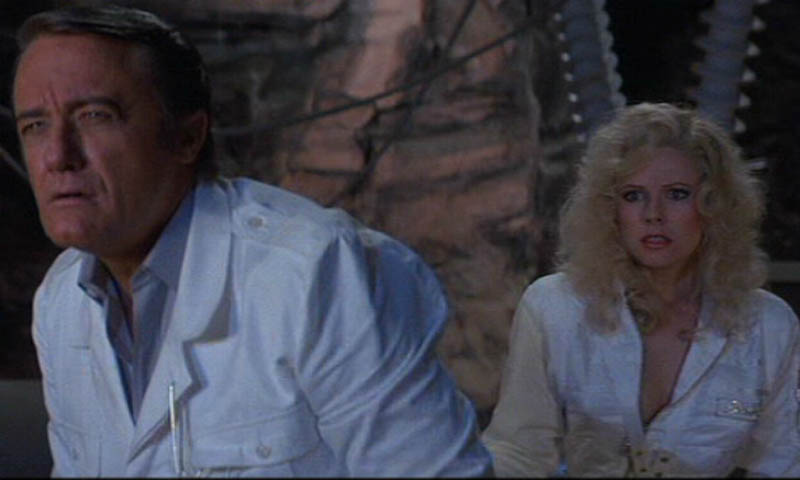

Richard Lester, in spite of his brilliant work on Robin & Marian and A Funny Thing Happened on the Way to the Forum, seemed to think he was
making a comedy when he made Superman III. The result is a film that is not funny and not Superman.
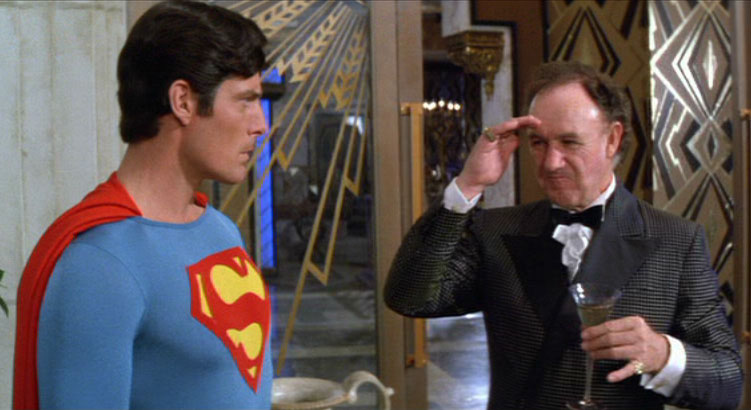
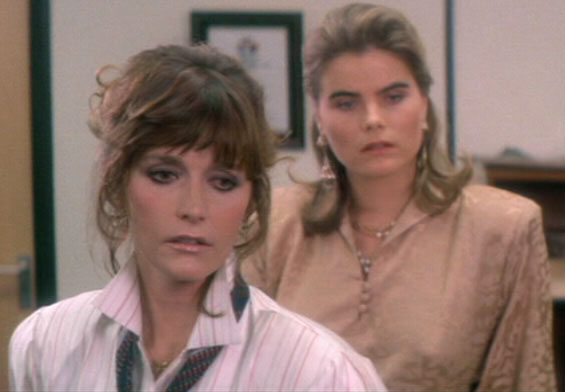
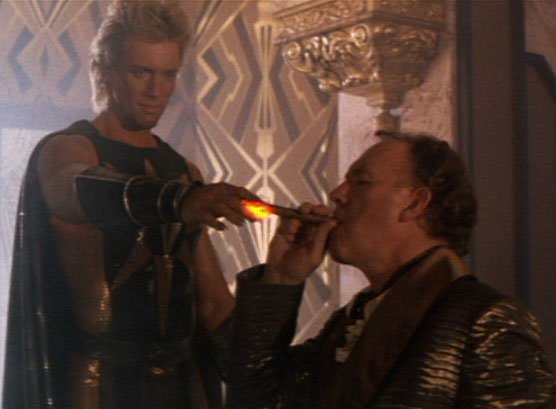
In Superman IV, which was released in 1987 & directed by Sidney J Furie (The Entity), Luthor creates a clone of Superman from the cells in a
strand of the Last Son of Krypton’s hair. He then mutates the clone into the Nuclear Man, which could, again, be thought of as a version of Bizarro.
The producers add two more new and completely superfluous characters in the form of Mariel Hemingway’s Clark-chasing Lacy Warfield (perhaps a
precursor to Cat Grant?) and Luthor’s new sidekick, cousin Lenny (Jon Cryer).
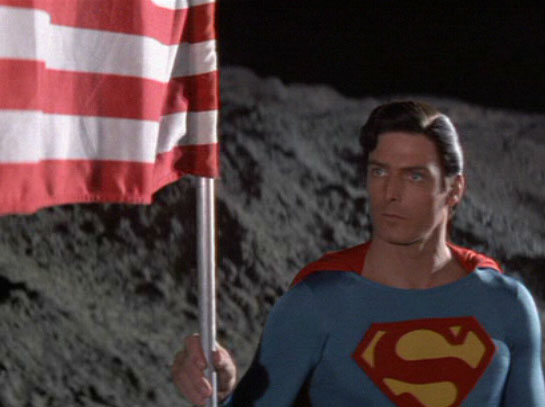

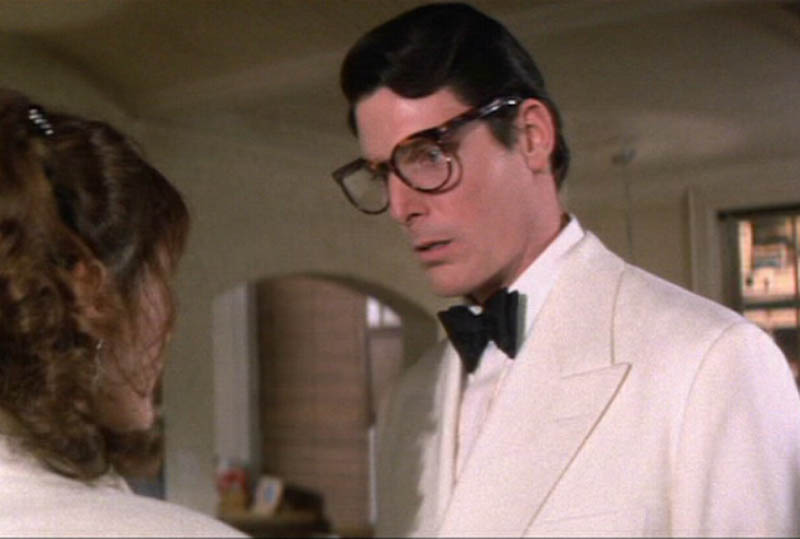
This film is somewhat superior to Superman III, if only for Gene Hackman’s witty presence. The Nuclear Man looks like a refugee from a 50s monster
movie, and most of this film’s special effects look as if they are from the same period. Christopher Reeve made the film on the condition that he could
write it. Evidently he had something to say about nuclear disarmament. It is unfortunate that he chose the Man of Steel as his political vehicle.
Superman’s interference in government policy in this film is completely out of character. That’s why he is frequently called a “Boy Scout.” He does
not drink, does not smoke, tells the truth, and he certainly does not commit insurrection.
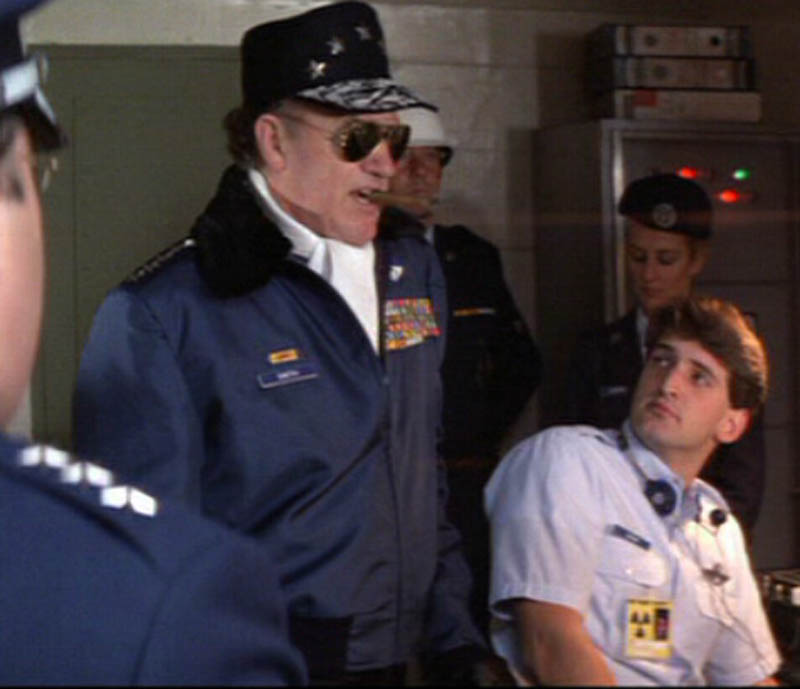
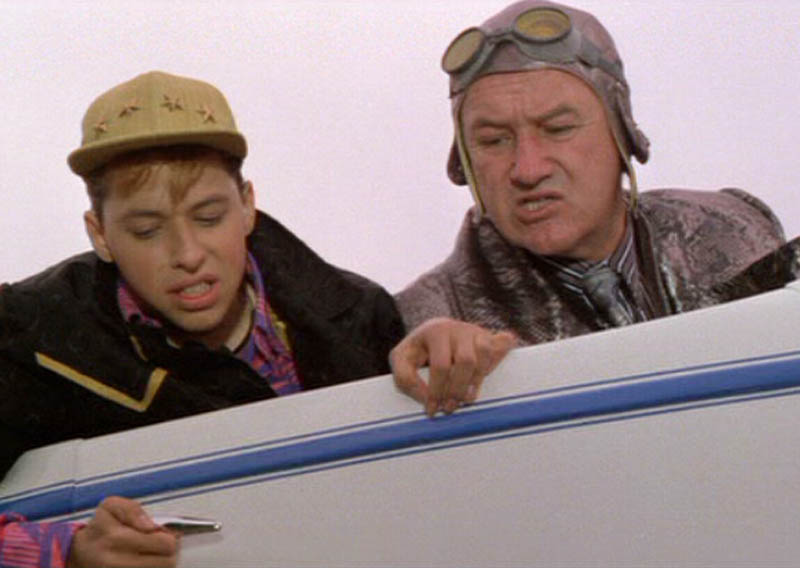
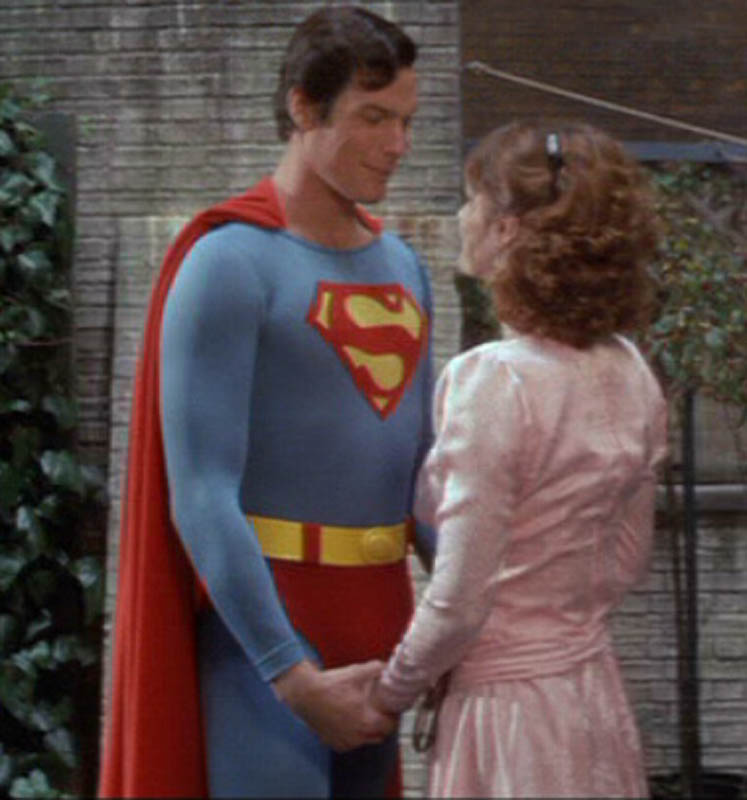
Post-Crisis Superman
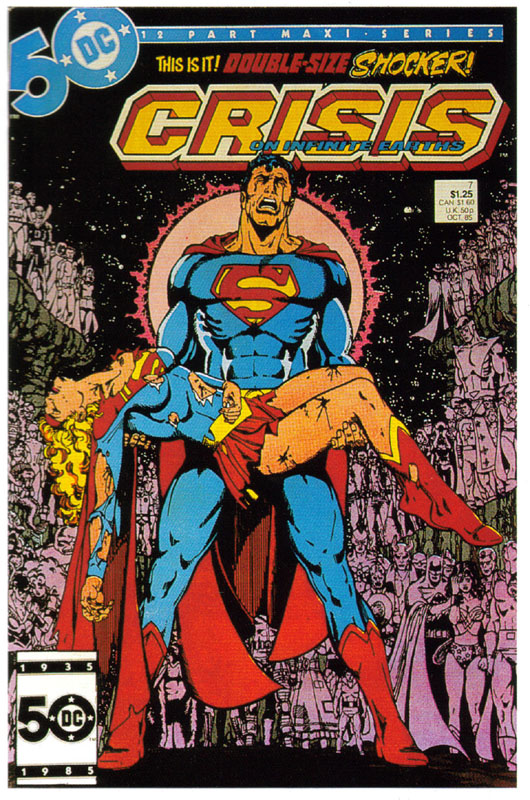
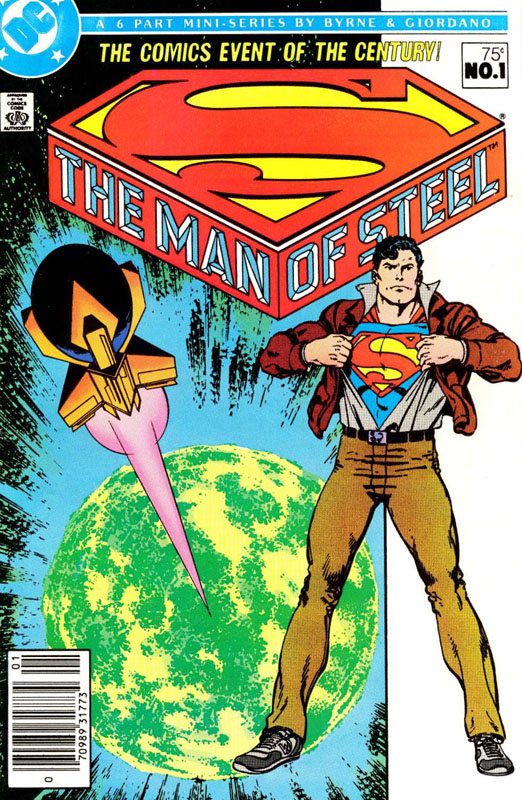
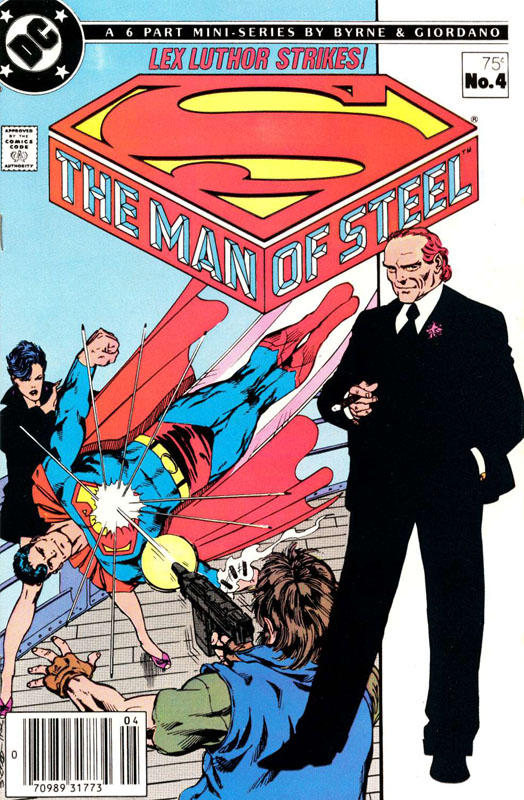
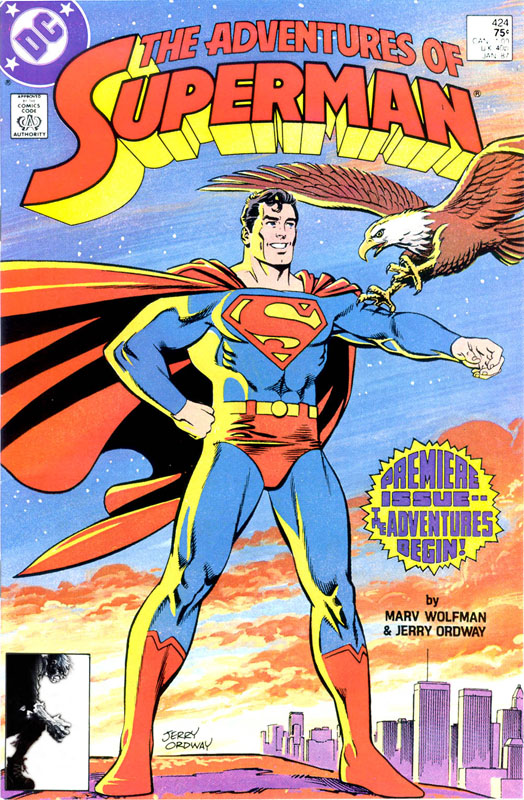
In 1985, the Crisis on Infinite Earths was a massive cataclysm, which pitted every DC super-hero against every
super-villain and the new arch-villain, the Anti-Monitor, a being as powerful as Galactus.
If not the first crossover maxi-series (a distiction belonging to Marvel Super-Heroes Secret Wars), the Crisis was the longest
& most far-reaching to date.
One of the stated goals of the Crisis was to simplify the DC Universe, to free it from the shackles of 50 years of continuity,
and hence to make it more amenable to new readers. The Crisis also sought to correct an oversight that had appeared as a
result of the Silver Age re-launching of classic heroes who had ceased publication at the end of the Golden Age, such as
the Flash & Green Lantern. In the first Earth-1/Earth-2 tale in the pages of The Flash, the Silver Age Flash of
Earth-1 (Barry Allen) reveals that he grew up reading the exploits of the Golden Age Flash of Earth-2 (Jay Garrick) in the
pages of comic books. Eventually, other comics showed that every Golden Age hero of Earth-2 was in fact a comic book
character on Earth-1, including Superman, Batman, & Wonder Woman, the three heroes who had survived the end of the
Golden Age and therefore had had no formal revamping for the Silver Age. This was only logical, since the heroes had
interacted in the Golden Age, appearing in each other’s titles & all teaming up to form the Justice Society of America.
And for the Flash & Green Lantern, there was no problem with the issue of being comic characters between Earths because
the Earth-1 Flash had a different secret identity from the Earth-2 Flash. Hence someone on Earth-1 reading the comic book
adventures of Jay Garrick would not therefore know that Barry Allen was the Flash on the reader’s own world. The problem lay
in the fact that this self-same reader would discover the secret identities of DC’s three flagship super-heroes Superman,
Batman, & Wonder Woman because their costumes, powers, & secret identities had remained static.
The rationale for the Crisis notwithstanding, it resulted in the deaths of Supergirl and the Flash (Barry Allen) and the
destruction of Earth-1, Earth-2, and every other Earth or universe known to exist. And every DC character was re-launched
from scratch. Popular comic writer/artist John Byrne (b. 1950) took on the ambitious task of shaking the dust off the
50-year-old Man of Steel and making him new.

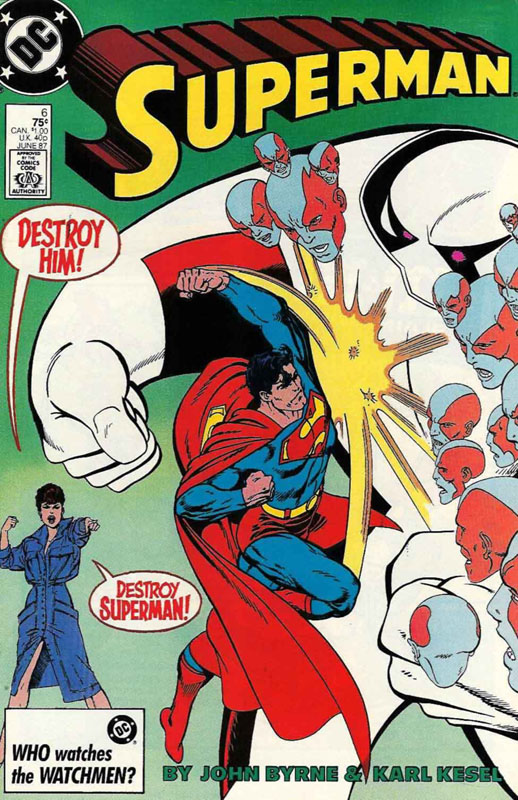
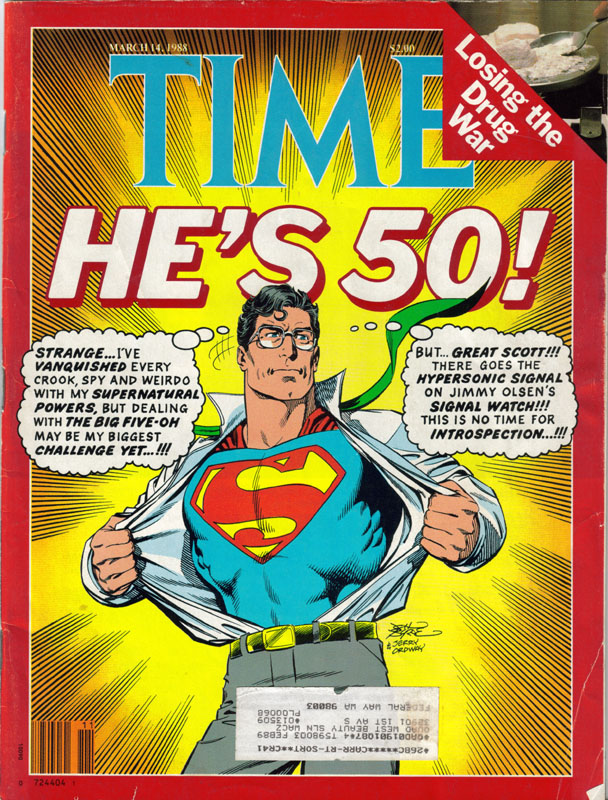
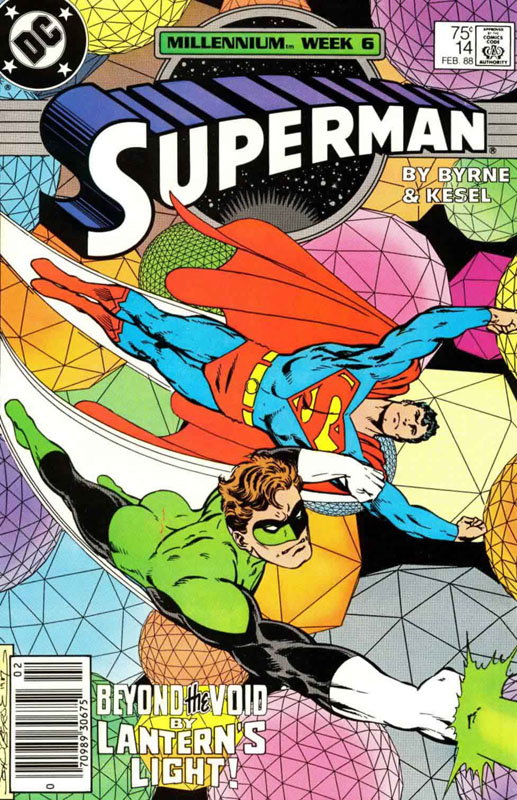
Byrne’s Superman shared much with the Christopher Reeve movie incarnation of the Metropolis Marvel. He arrived on Earth as a baby, was adopted by the
Kents, discovered his powers gradually, and did not assume a Superboy identity. Also like the film version, Byrne’s young Clark Kent did not wear
glasses, but unlike the film version, this young Clark was the sports hero of his high school. This may have been a plot oversight for Byrne whereas
it was not for the Christopher Reeve film. In the film, people would not recognize Superman for Clark because eight years had passed between the last
sighting of young Clark and Superman. (They were even played by different actors.) But not so, with Byrne’s post-Crisis Kent. As soon as Superman
appeared, people from Smallville should easily have recognized him as Smallville High’s star athlete, Clark Kent.
Diverging from both the films and the
comics, the Byrne Man of Tomorrow never had a romantic relationship with Lana Lang and both of his adoptive parents survived into his adulthood. As in
the film, Superman did not meet Lex Luthor until they were adults living in Metropolis. In a bold move, Byrne transformed Luthor from a
super-scientist/inventor to an evil businessman. This version of Lex had never been hinted at in the comics, although it was foreshadowed in the film.
Strangely, the Silver Age Luthor was not interested in Superman’s secret identity. He could easily have discovered it many times. Evidently, Lex
considered this pursuit beneath him and left it to Lois, Lana, and lesser criminals. However, the post-Crisis Luthor makes at least one attempt to
discern the relationship between Clark and the Man of Steel, ironically not believing his own computers and employees when they tell him that Superman
is Clark. Byrne’s Luthor was more like the Spider-Man and Daredevil villain the Kingpin than he was like the pre-Crisis Lex. Byrne’s Bizarro was a
tragic Frankenstein’s monster rather than the comical mischief-maker of the Silver and Bronze Ages. Byrne’s Metallo resembled the Terminator robot
from the films. Byrne’s Mxyzptlk was a lanky creature who agreed to return to his home dimension upon fulfilling some arbitrary, pre-arranged condition, but was not involuntarily compelled to return on saying
his name backward. Byrne’s Brainiac underwent a gradual evolution, which, throughout its lengthy course, never came very close to
resembling the Silver Age android. Most significantly, Luthor possessed the only known piece of kryptonite (and the kryptonite was green, not red,
gold, blue, silver, white, or purple) on Earth, and Superman was indeed the Last Son of Krypton. No true Kryptonians were seen for years in the
comics after Byrne’s revamp. Strangely, in light of Byrne’s insistence that there be only one Kryptonian and DC’s claim that the Crisis simplified
the universe, Byrne apparently loved the very mythos, which he radically altered, so much that he introduced Supergirl, Superboy, Krypto, and the
Phantom Zone villains through a tortuously convoluted story arc that both allowed these characters to exist and interact with Superman yet did not
violate the prohibition against other survivors from Krypton.
Additionally, Byrne painted a vastly different picture of Krypton itself from what had come before. He depicted Kryptonian culture as cold, unemotional,
and Victorian. Kryptonian fashion and architecture were unlike the previous comic version and, in the case of fashion, unlike what had been seen in the
films.
The Daily Planet received its first new staff member in years in the form of gossip columnist Cat Grant. Cat aggressively pursued Clark, and her primary
function was as Lois’ rival for Clark’s affection—a role filled by many characters over the years but most often by Lana Lang.
Unaccountably, Lois’ hair changed colors from black in Man of Steel #2-6 to brown in Superman #1, contradicting 50 years of comics and
Margot Kidder’s portrayal. Perhaps Byrne wanted to make her resemble Noel Neill more.
Another of Byrne’s changes was the weakening of Superman. Attempting to make the Man of Steel more realistic and to
create plot tension & conflict, which was difficult to do with the nearly omnipotent Action Ace of the Silver & Bronze Ages,
Byrne toned down the Caped Kryptonian’s powers & abilities several notches. One unwelcome side-effect of this was to make
Superman appear weaker in comparison to other heroes. For example, gone were the days when Superman could break the
“time barrier” by flying faster than the speed of light. Yet Doctor Fate & Green Lantern were still capable of temporal
travel.
As good as Byrne’s art & storytelling were and as exciting as this time of revolutionary change at DC was, there was a
bittersweet sense of immense loss in the elimination of Kara & Krypto, time travel, Superboy, the relationship with Lana,
the multi-hued varieties of kryptonite, the android Brainiac, and the scientific Luthor.
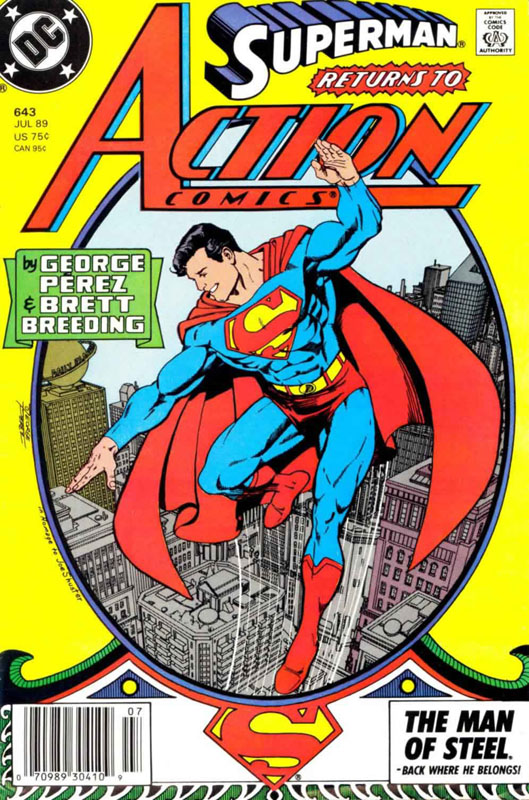
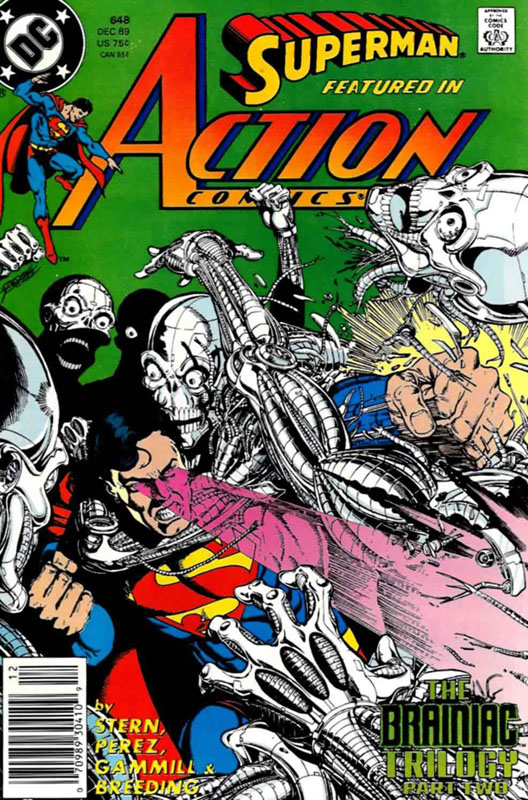
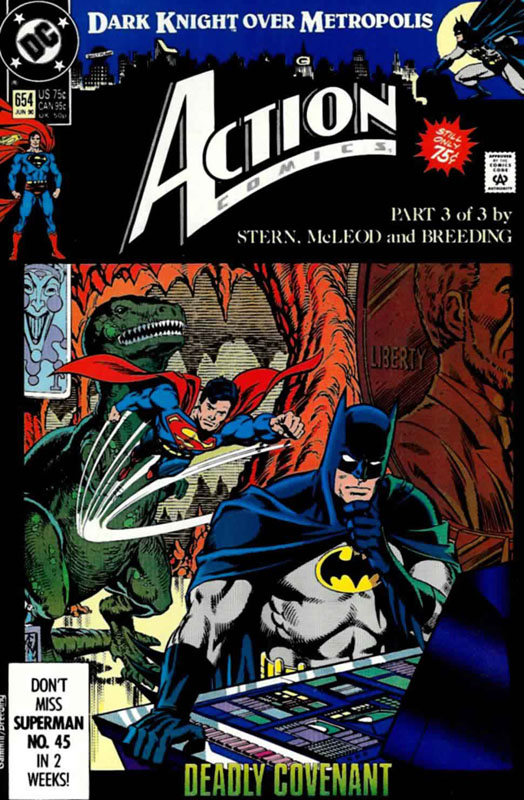

Byrne left DC after about two years, and the Post-Crisis (or New World) Superman chugged along uneventfully until his unprecedented engagement to Lois
Lane.
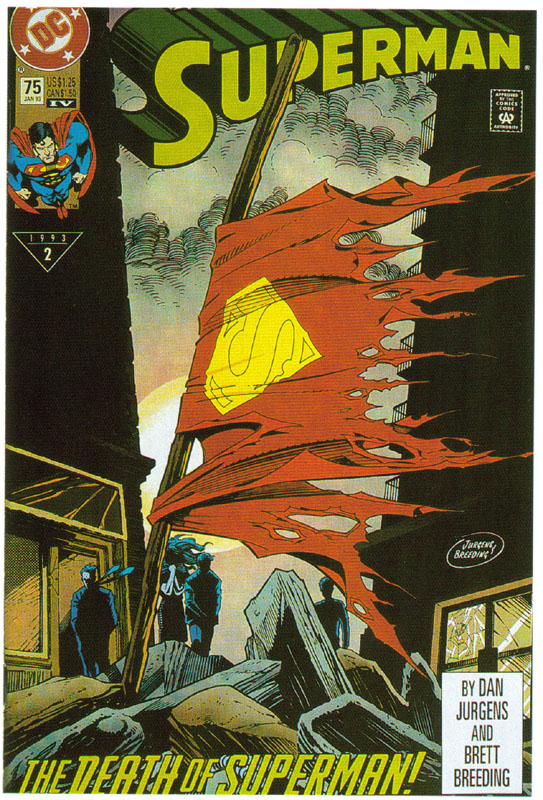
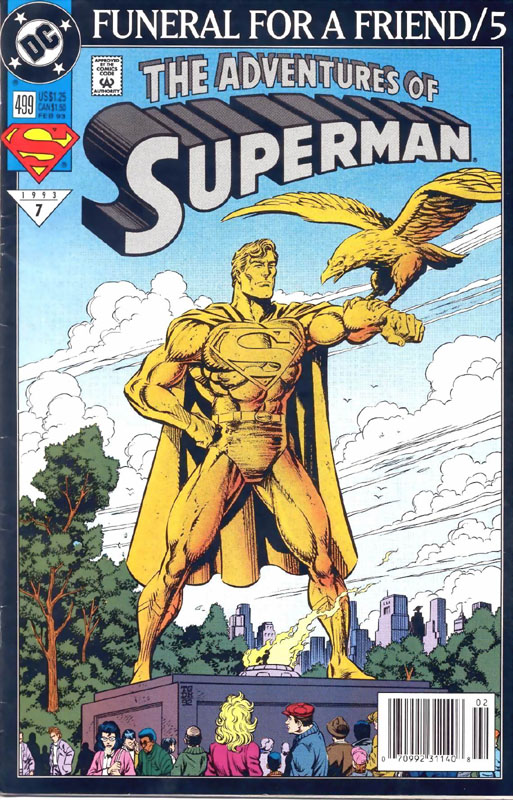

And then he died...
At the hands of a new villain/monster called Doomsday in 1992, Superman actually, really, physically ceased to live.
For about a year.
Then, through the twin miracles of Kryptonian technology and his own alien physiology, Kal-El returned from the grave. (“I am the resurrection and the
life....”)
After several plot twists, Clark and Lois were married in December, 1996 in a special comic entitled Superman: The Wedding Album, published the same
week in which they were wed on the TV series Lois & Clark.
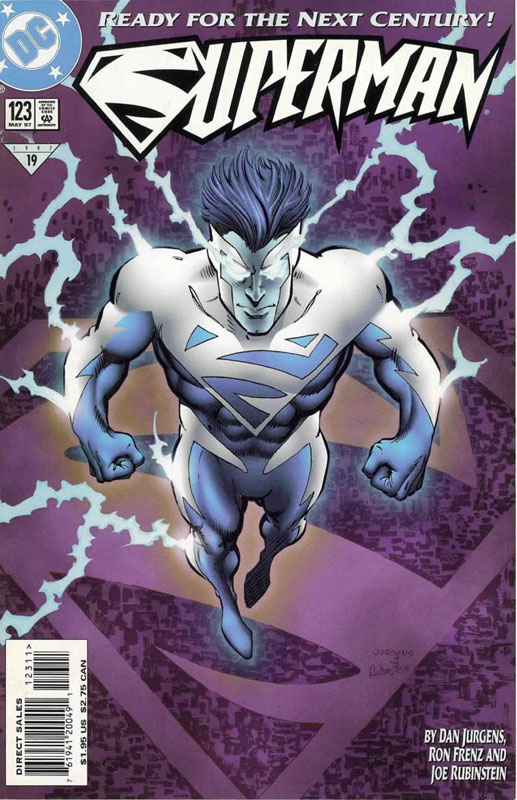
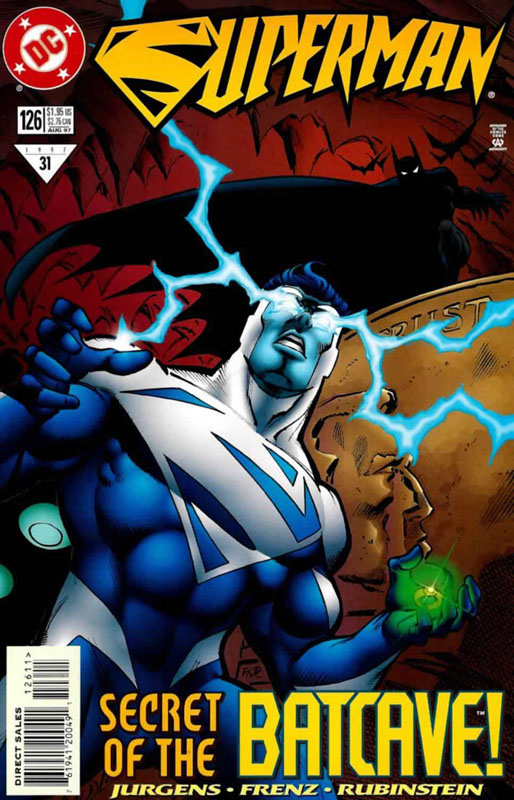
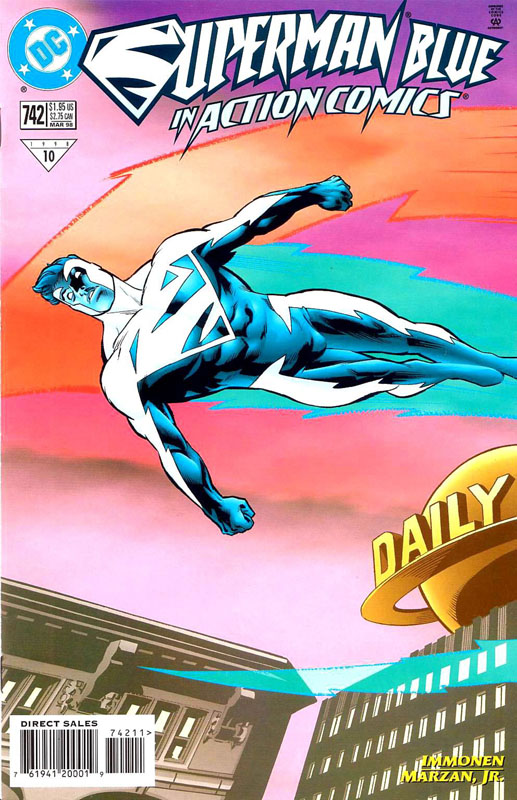
In 1997, Superman lost his traditional powers and became a being of blue energy. He wore a new costume and was even briefly split into two
Supermen—blue and red. In 1998, his two halves re-joined, and his traditional powers and costume returned.
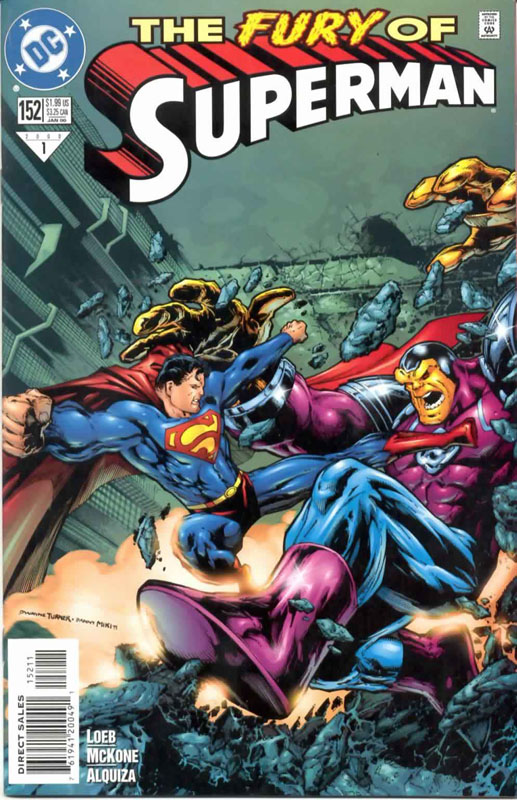
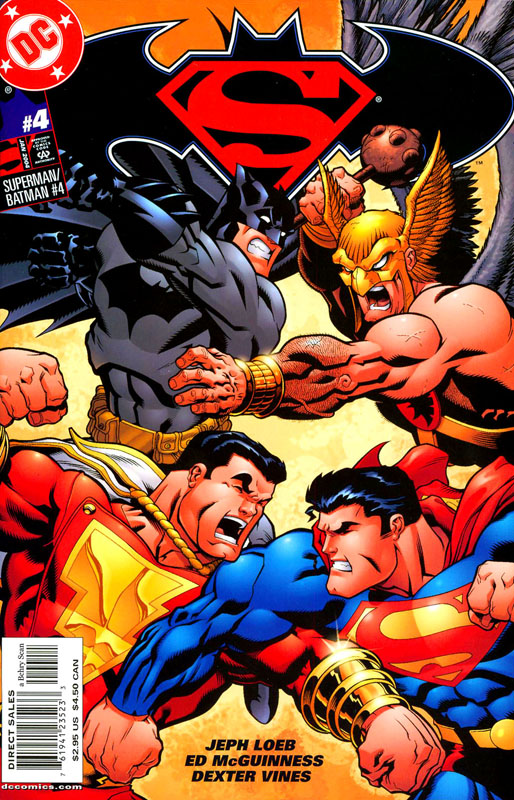
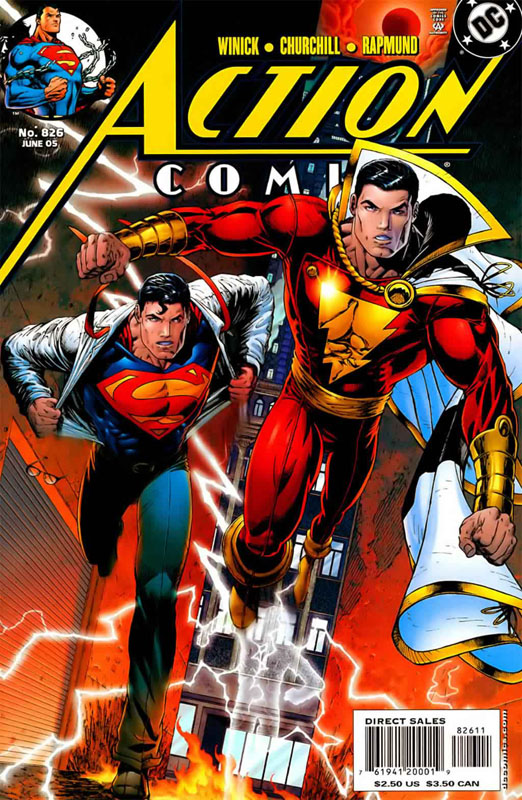

The new Luthor died and was reborn in a cloned body, eventually becoming President of the United States for a few years.
Sidebar on the Issue of Krypton’s Location
Byrne has Krypton’s solar system located within the Milky Way just 50 light years from Earth. While this may make the whole concept more realistic,
it flies in the face of what has come before. Supposedly Krypton was located in Space Sector 2813, the Sector for which Green Lantern Tomar Re was
responsible—whereas Earth is in Hal Jordan’s Sector 2814. The Guardians divided the entire universe into just 3600 Sectors. The universe is a big place,
containing some 125 billion galaxies. Assuming the galaxies to be uniformly distributed across Space Sectors, this leaves almost 35 million galaxies per
Sector—the fact that the Sectors’ consecutive numbering implies that Krypton and Earth are nearby notwithstanding. Furthermore, the first Superman
film states that Krypton is in another galaxy, and a few recent comic book references have described Krypton as being in the Andromeda Galaxy—the
nearest large spiral galaxy to the Milky Way. This, too, is unlikely unless the division between Sectors 2813 and 2814 just happens to be between
the Milky Way and Andromeda, improbable given that each Sector contains 35 million galaxies.
Superboy of the Superboy TV Series
Top
Golden Age through Earth-2 Superman
Lois & Clark: The New Adventures of Superman
Smallville through less direct versions of Superman
Home







































































